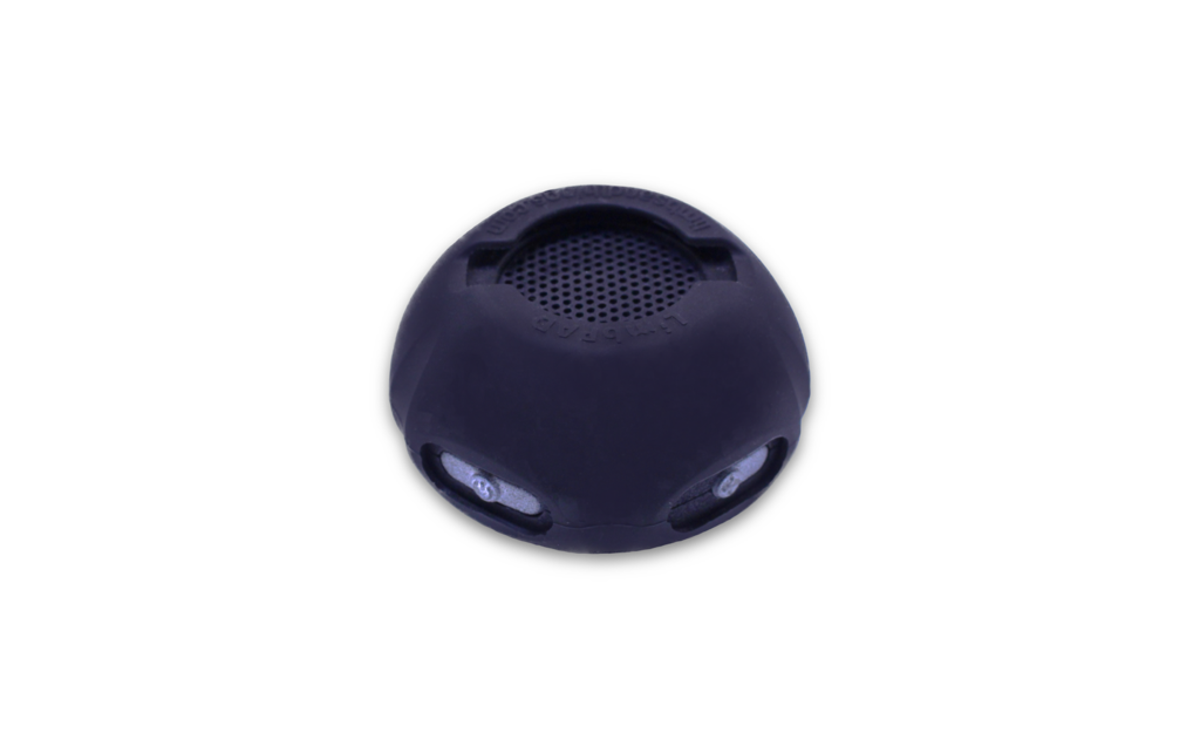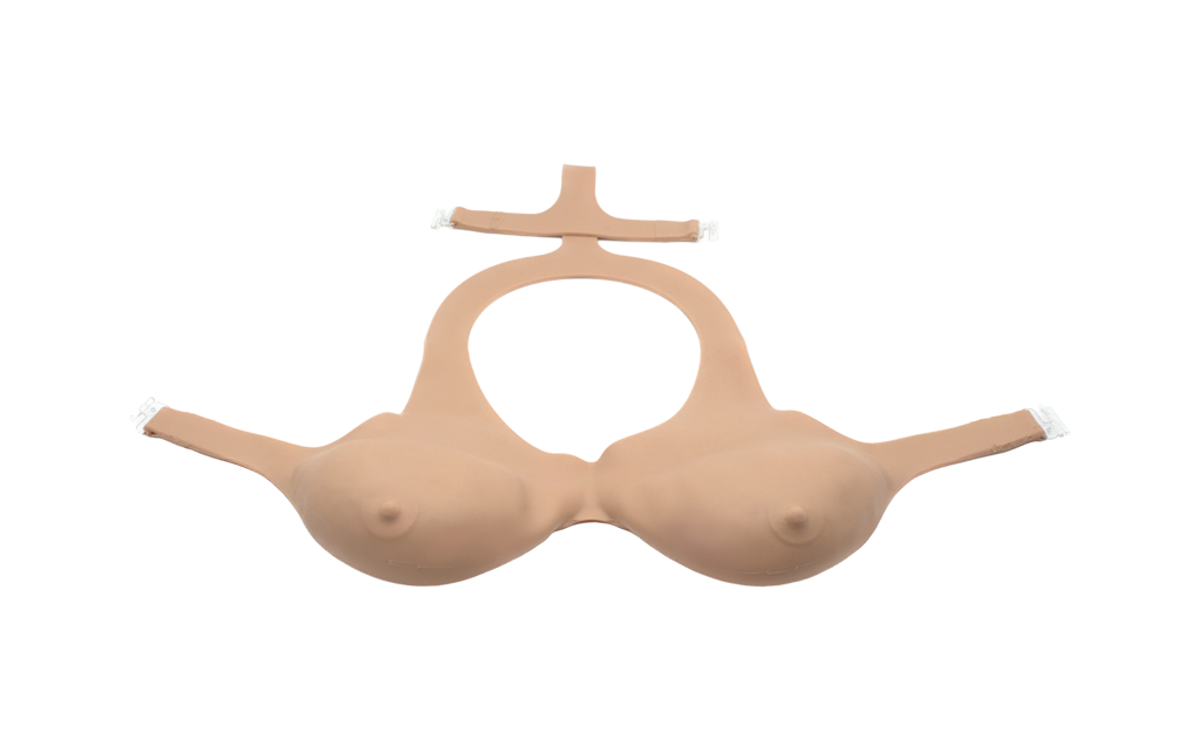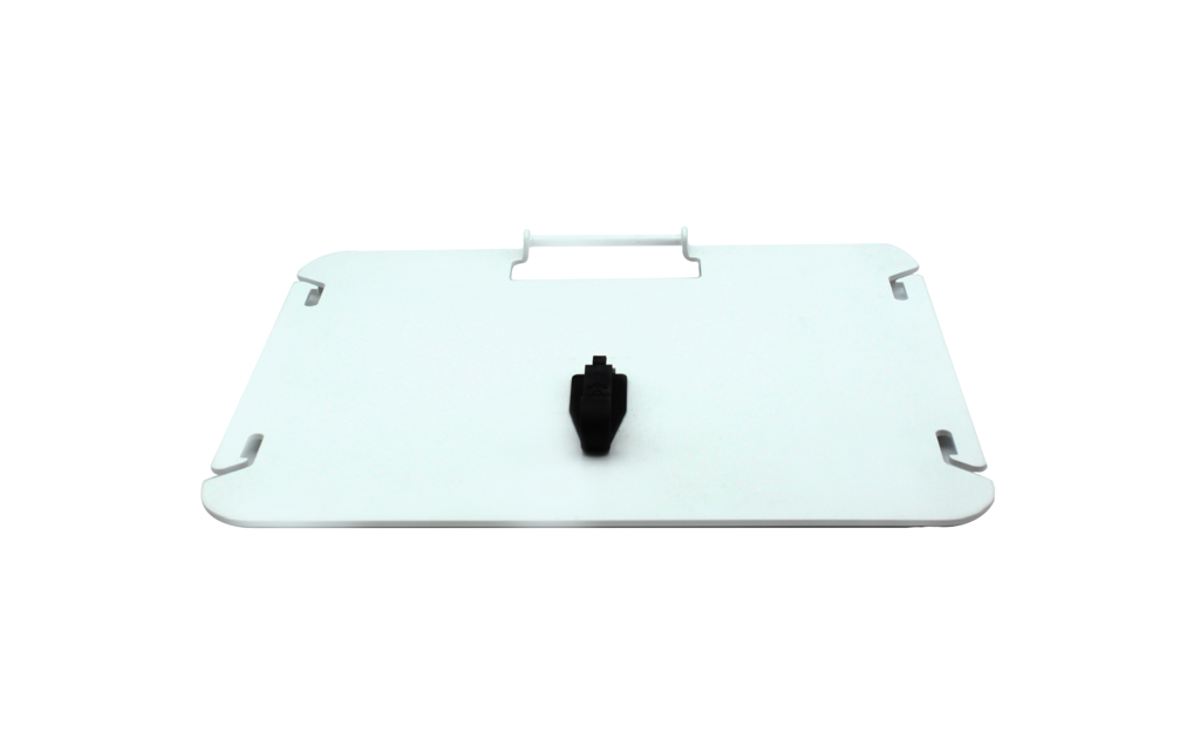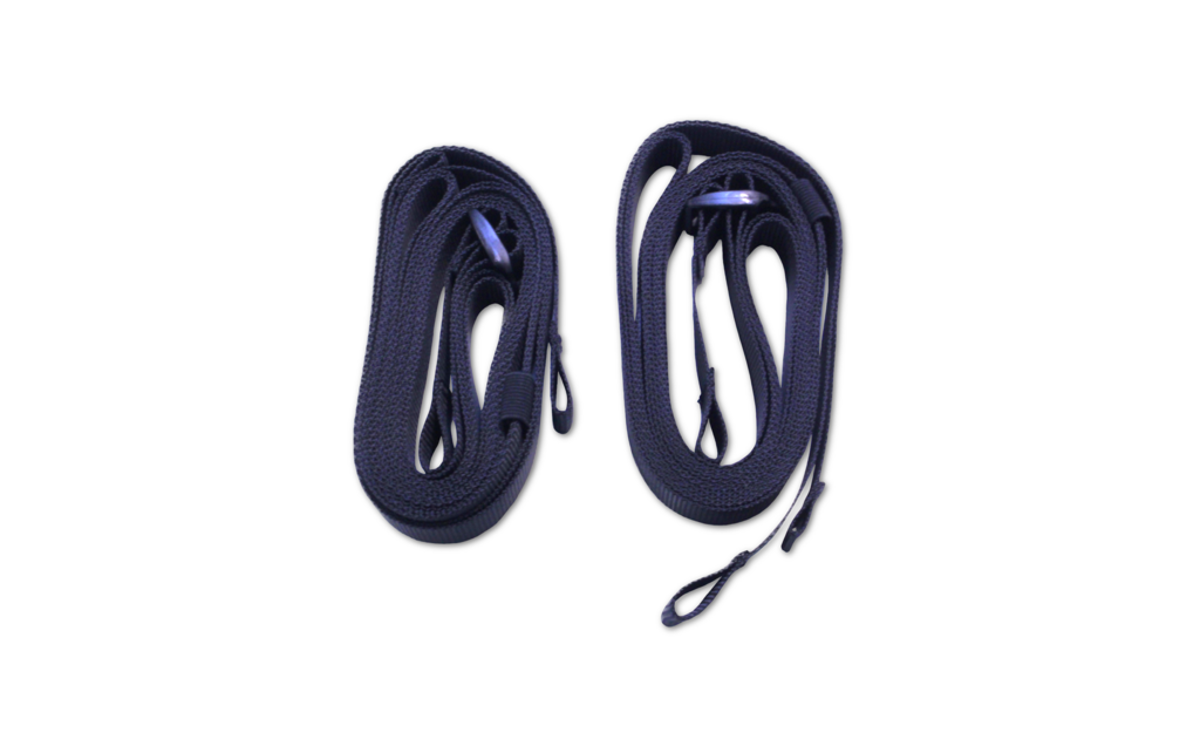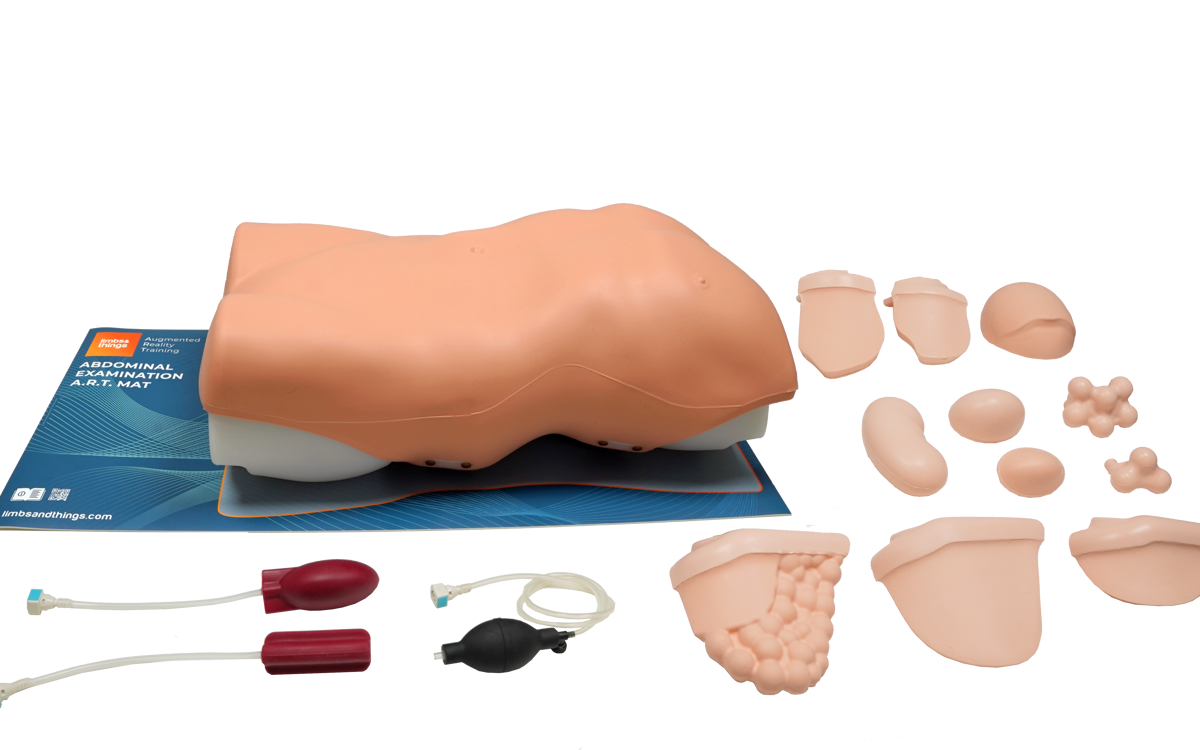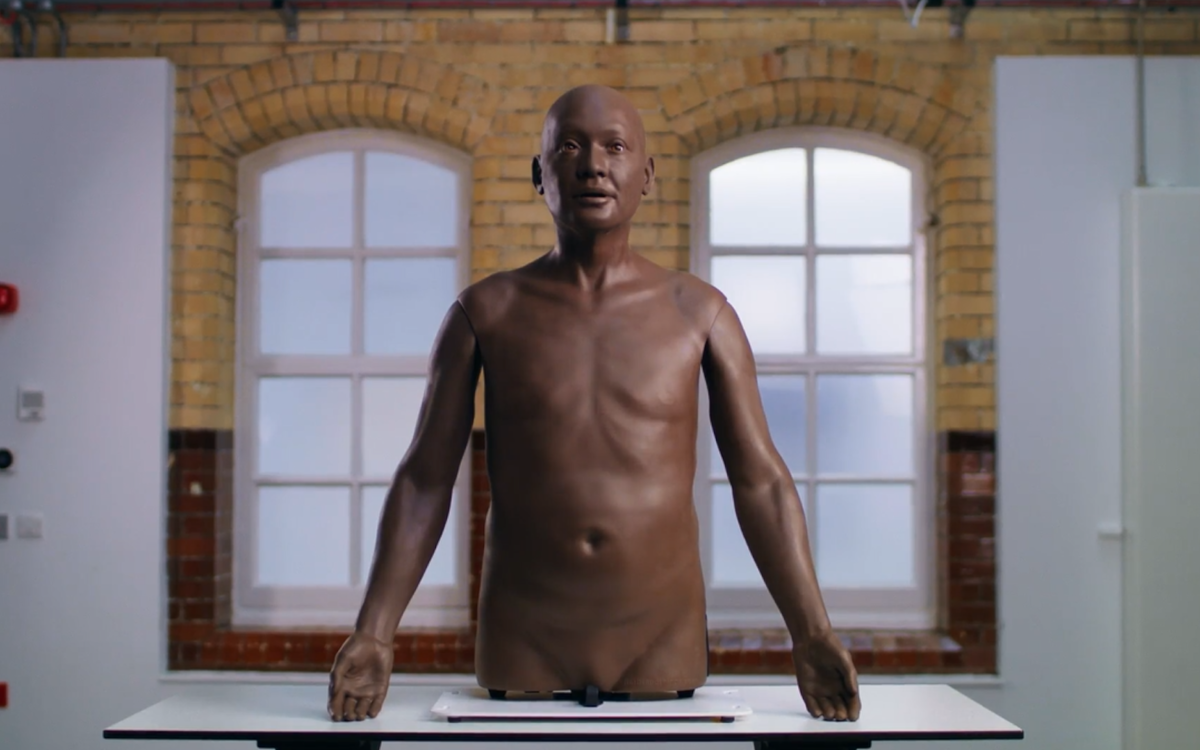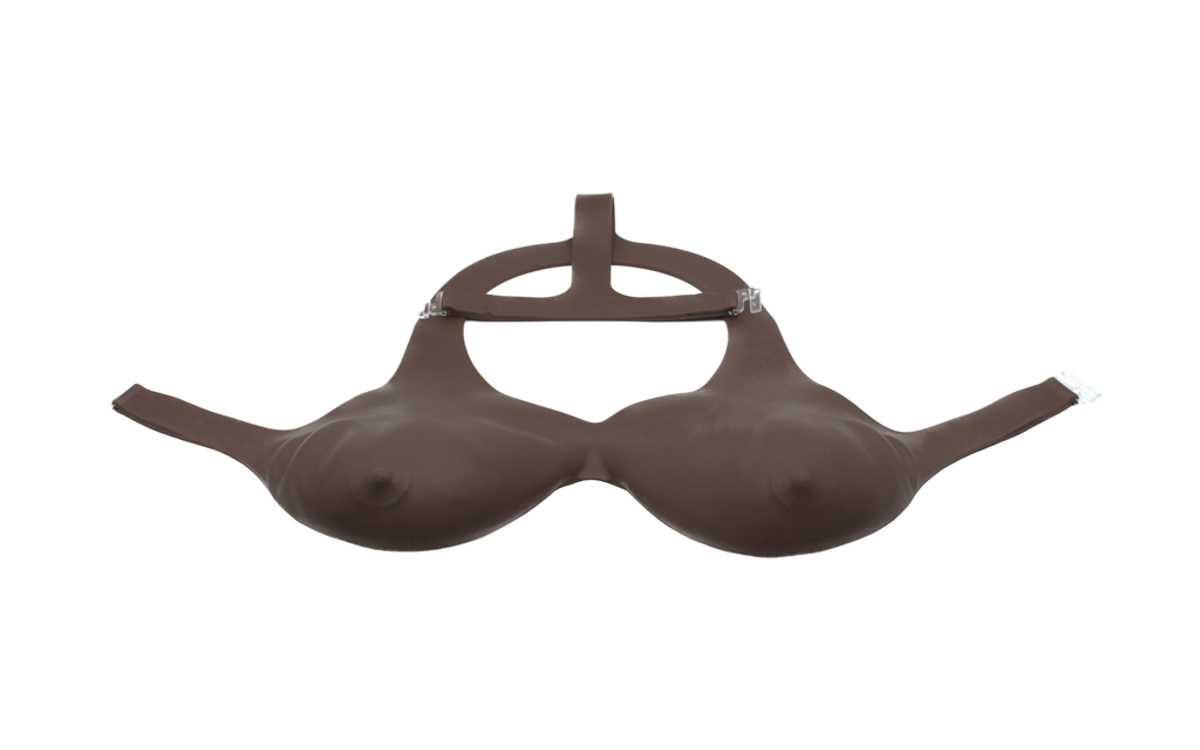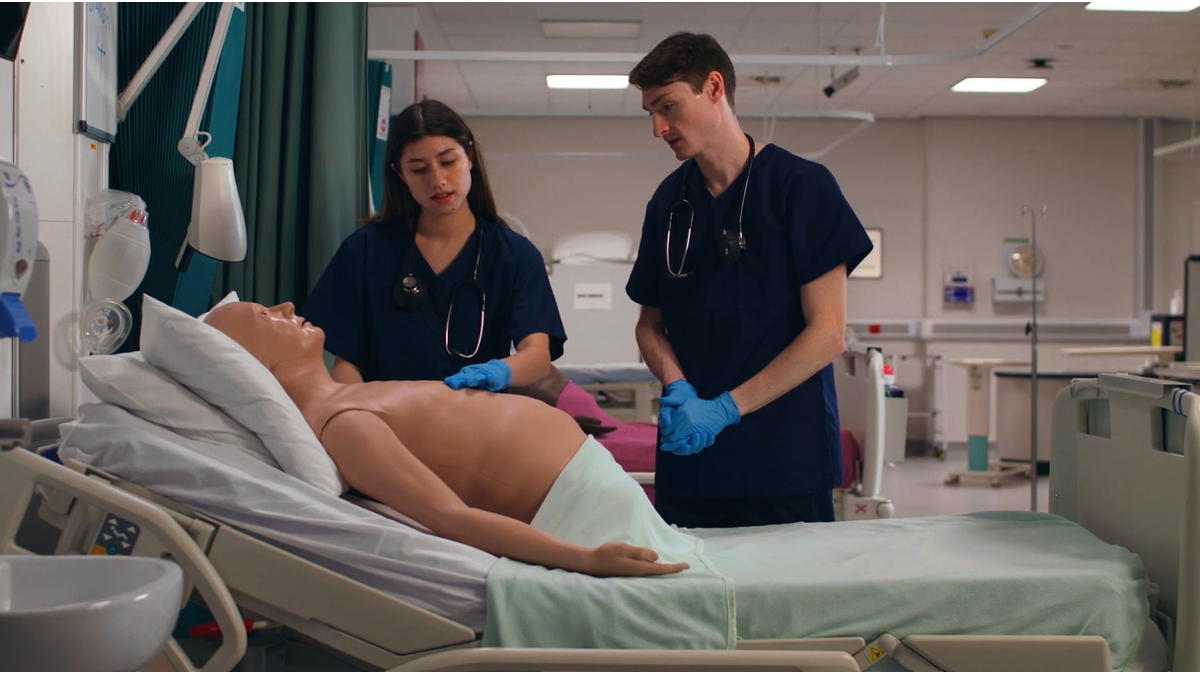
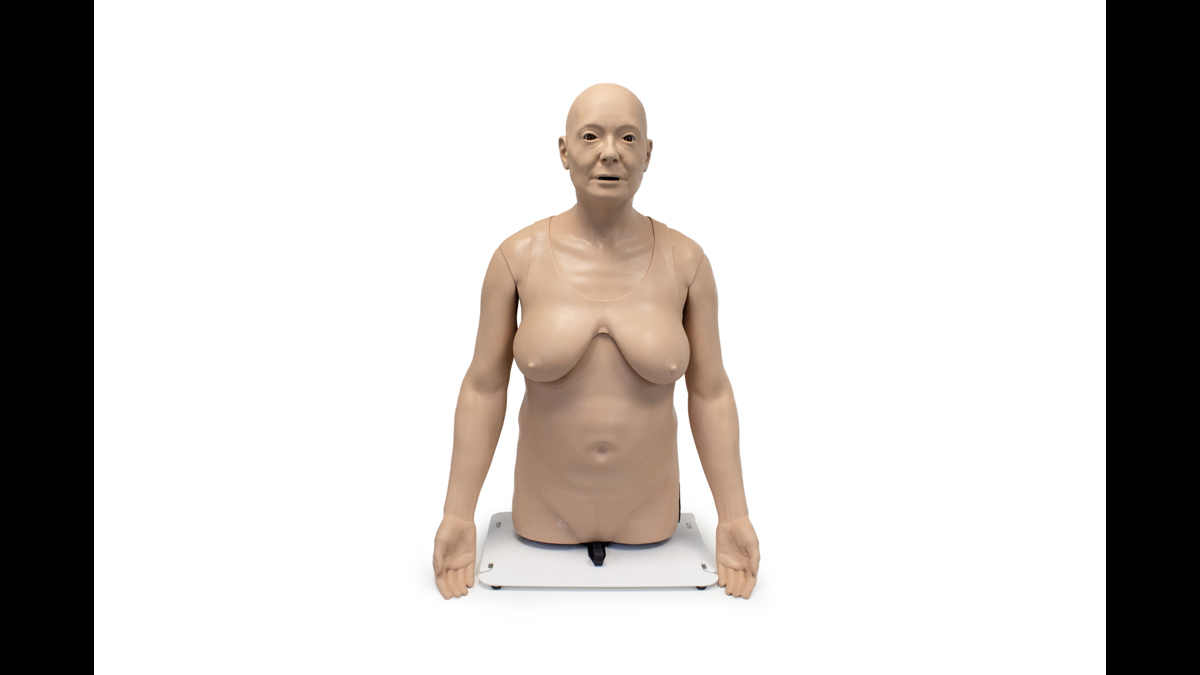
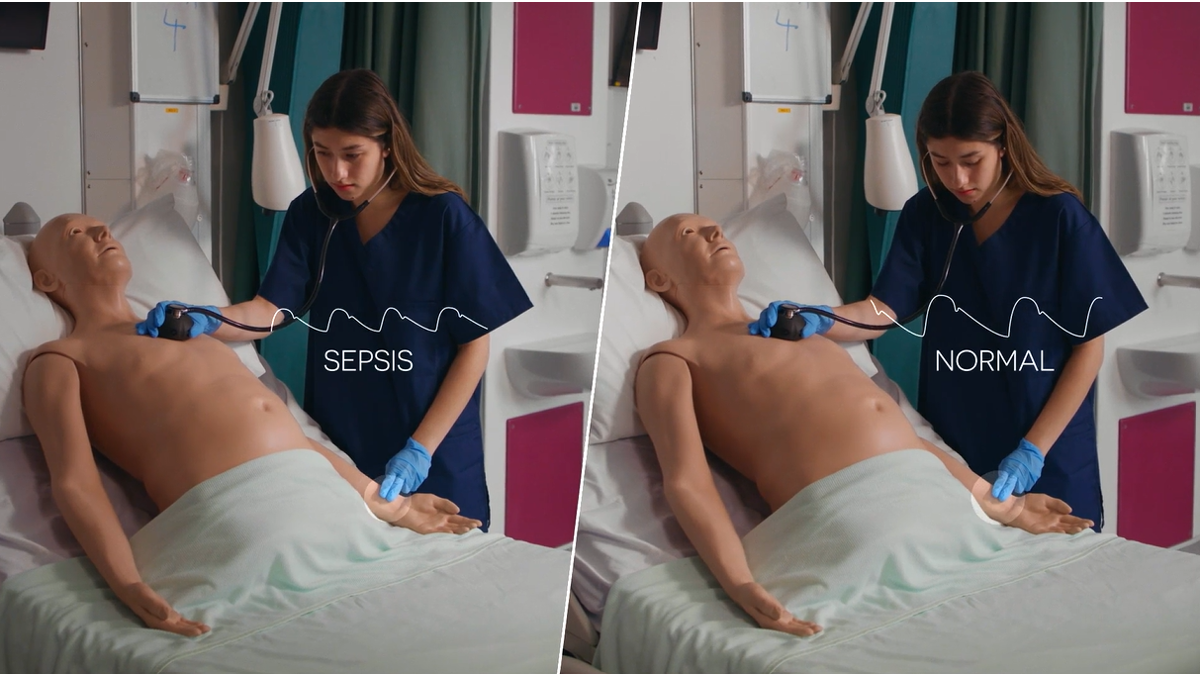
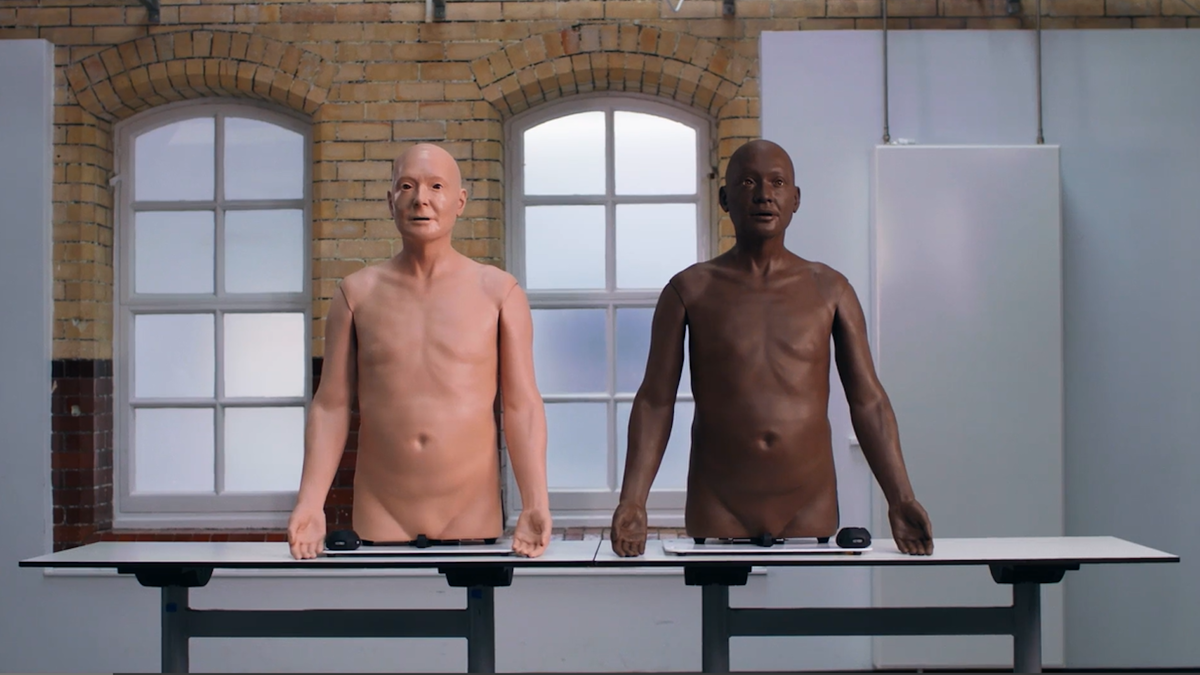

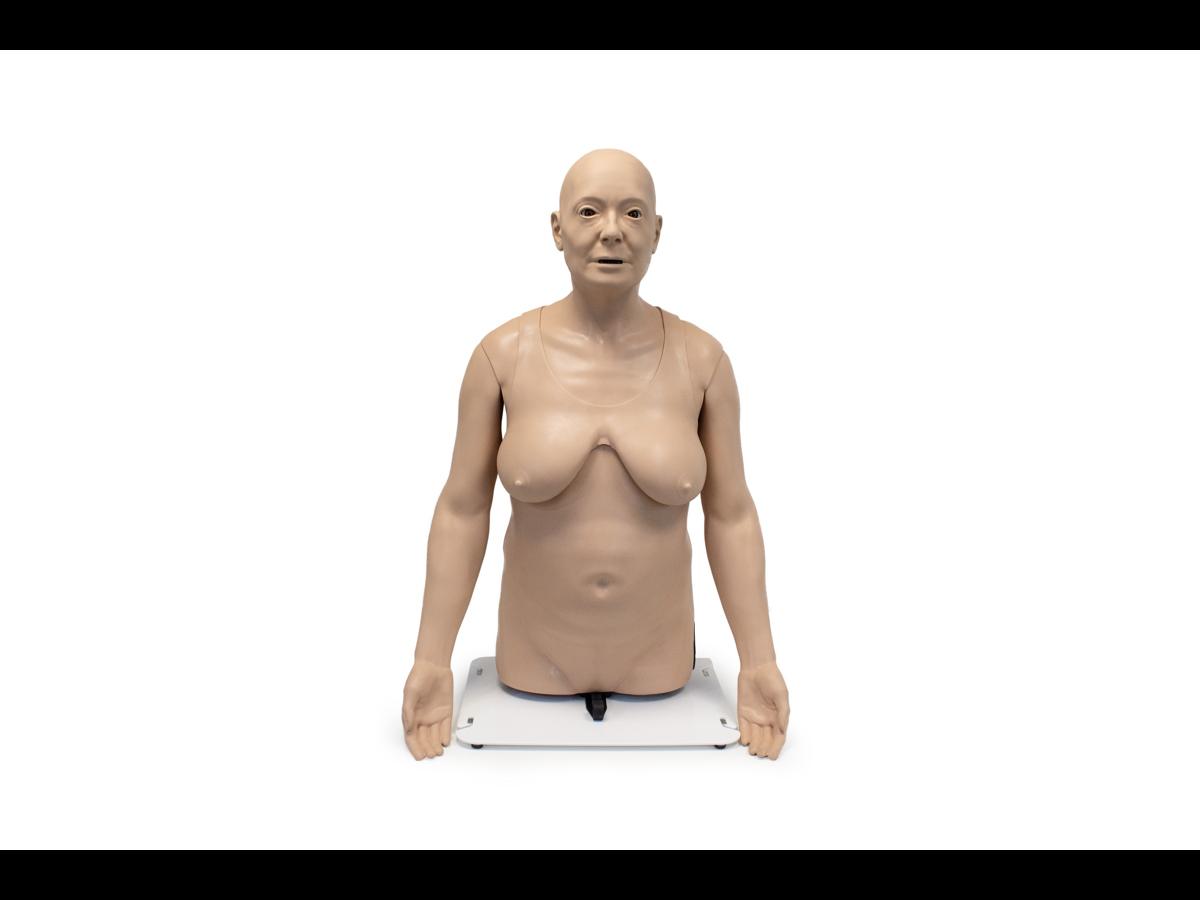


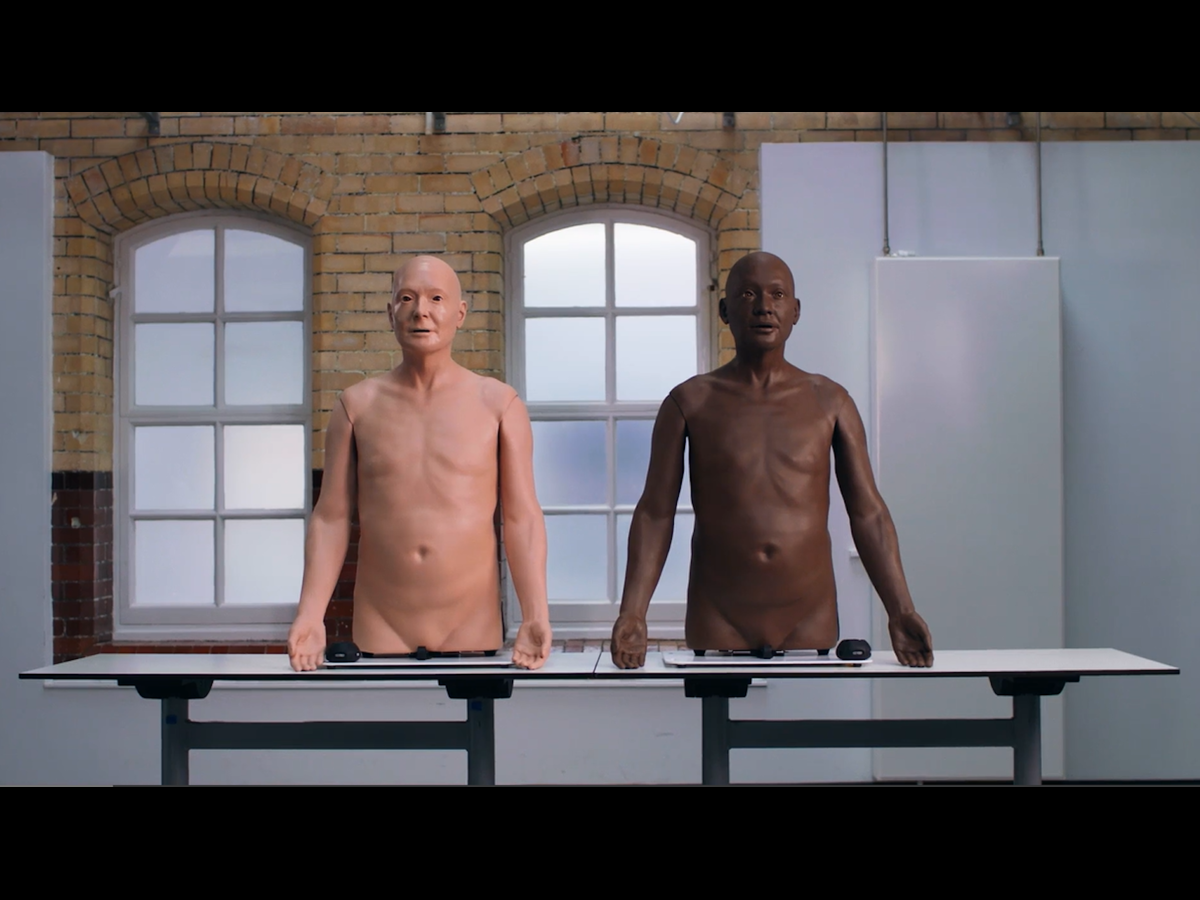
Cardiovascular and Respiratory Exam Trainer (CaRE, Light Skin Tone)
Skin Tone
CaRE software is now available in 11 languages!
English • French • German • Hindi • Italian • Japanese • Malay • Mandarin • Polish • Portuguese • Spanish
Cardiovascular and Respiratory examinations are a core skill that students’ learn early in their training. CaRE is the first trainer of its kind that can take learners from the first stages of this journey, learning individual skills, such as feeling and identifying pulses, through to full representations of a patient presenting with a cardiovascular or respiratory condition.
With the RFID & other technologies incorporated in this manikin, the replications of heart and lung sounds, as well as pulses and breathing movements, give realistic presentations of 31 clinical cases.
Auscultation
CaRE produces 10 lung sounds and 23 heart sounds, ranging from normal, common, and more specialist conditions. This allows the trainer to be used by a wide range of learners, studying at different levels, to practice their techniques.
Cardiovascular and Respiratory examinations are a core skill that students’ learn early in their training. CaRE is the first trainer of its kind that can take learners from the first stages of this journey, learning individual skills, such as feeling and identifying pulses, through to full representations of a patient presenting with a cardiovascular or respiratory condition.
With the RFID & other technologies incorporated in this manikin, the replications of heart and lung sounds, as well as pulses and breathing movements, give realistic presentations of 31 clinical cases.
Auscultation
CaRE produces 10 lung sounds and 23 heart sounds, ranging from normal, common, and more specialist conditions. This allows the trainer to be used by a wide range of learners, studying at different levels, to practice their techniques.
Designed with realism in mind, the Cardiovascular and Respiratory Exam Trainer includes a “LimbPAD”. Fit the device to any of the commonly used stethoscopes and simply use the stethoscope as normal.
Realism is key
The Cardiovascular and Respiratory Exam Trainer is our most lifelike simulator to date, with features that bring a new dimension to learning.
Variable chest rise – Symmetrical and asymmetrical chest rise can be set to varying rates, patterns and depth. Feeling and visualising this in a patient is a difficult skill, and this feature gives a haptic and visual learning opportunity.
Finger on the pulse – Set a pulse profile with normal or abnormal properties to improve students’ diagnostic skills. Palpable pulse points throughout the body give realistic, and organic, feel.
- Realistic thrills at all heart valve locations
- Visual and palpable representation of heaves
- Normal and displaced apex beat
- Normal and displaced trachea and larynx
Suitable for group training
There are two ways to take the CaRE’s teaching capabilities to the next level:
- A second LimbPAD can be added to your CaRE model, allowing two, hands-on students to be taught at the same time
- With the addition of an off-the-shelf external speaker connected to the LimbPAD via an aux 3.5mm jack, a whole class will be able to participate in training
Simple user controls for students and teachers
Connect your device wirelessly to the CaRE Examination Trainer to control all aspects of the model. Students can test and refresh their knowledge, while teachers can challenge their students’ skills with bespoke characteristics.
Skills section – practice individual skills, including: heart auscultation, lung auscultation, breathing rates, Pulse rates and character, apex beats, thrills, heaves, and mouth sounds.
Clinical cases – capitalises on the patent pending performance of the pulses, lung & heart movement, mouth sounds and chest movements.
Assessment mode – teachers can make class assessments based on the clinical cases, patient history are customisable and make for perfect self-directed learning.
Lesson plans – create individual plans with selected skills, cases and assessments for structured lessons and self-directed learning.
Overview
- 10 lung sounds and 23 heart sounds covering normal, common, and specialist conditions
- Anatomically accurate representation of a middle aged patient’s torso
- Start using straight from the box
Realism
- 10 lung sounds and 23 heart sounds covering normal, common, and specialist conditions
- Accurate placement of stethoscope possible
- Designed using patient ECG results and x-rays
- Symmetrical chest movement
- Asymmetrical chest movement
- Varying rate of breathing for different skill levels
- Mouth breath sounds when breathing add to the periphery examination of the patient
Versatility
- CaRE is accessible for hearing impaired students, and can be used with the Littmann Core stethoscope
- Respiratory and cardiovascular examinations can be performed in an upright or supine position
- This model can be used for male or female scenarios
- LimbPad can be used with most standard stethoscopes
- An additional LimbPad can be added to allow side-by-side training of two students
- Classroom training is also possible, with the use of an external speaker and a 3.5mm aux cable
CaRE software is now available in 11 different languages:
- English
- French
- German
- Hindi
- Italian
- Japanese
- Malay
- Mandarin
- Polish
- Portuguese
- Spanish
Cleaning
- Clean this product with a damp soft cloth and warm water with mild detergent
- Allow the trainer to completely dry before storing
Safety
- Ensure you have a good grip on the CaRE model before repositioning
- Complete trainer and accessories are heavy when packed
- Safe moving practices: two people when carrying, one person using a trolley
- This simulator contains electronics, do not submerge in water
Anatomy
- Middle aged adult torso (50+), male and female simulation possible
Skills Gained
- Clinical examination skills
- Diagnostic skills
- Tissue management
- Stethoscope placement
Respiratory Examination
- Inspection
- Palpation
- Auscultation
Cardiac Examination
- Inspection
- Palpation
- Pulses
- Apex Beat
- Auscultation
Product Contains
CaRE simulation trainers come with these items as standard, they can also be brought separately if they need to be replaced.
Works with the following products:
References
UK Foundation Programme Core Procedures - Guidance for Doctors and Assessors - "undertake clinical assessment of cardiovascular status".
Specific mentions of Cardiovascular Examination & Respiratory Examination.
Competence and Curriculum Framework for the Physician Assistant 2012 - 2.3.5 Examination (general) - Perform a physical examination tailored to the needs of the patient and the demands of the clinical situation, including, as appropriate... cardiovascular examination, respiratory examination.
Future Nurse: Standards of proficiency for Registered Nurses, Published 17 May - At the point of registration the nurse will be able to: 2.7 undertake a whole body systems assessment including... cardiovascular, 2.8 undertake chest auscultation and interpret findings.
National Organisation of Nurse Practitioner Faculties, Nurse Practitioner Core Competencies Content, 2017 Independent Practice Competencies p.14 - 3.b Uses advanced health assessment skills to differentiate between normal, variations of normal and abnormal findings. 3.c Employs screening and diagnostic strategies in the development of diagnoses.
Is the chest auscultation trainer suitable for respiratory assessment training?
Yes. The CaRE trainer has been designed and tested to support several aspects of respiratory assessments.
Ideal in group simulation training sessions, students can listen for and identify lung sounds and breath sounds, as well as assessing chest expansion. With students participating as simulated patients, you’re able to support learning of additional skills, such as: vocal resonance, percussion of lungs, and patient communication.
With the trainer’s versatility, you can set up hospital scenarios by placing the CaRE manikin in a bed for anterior assessment in a supine position. Additionally, when in the sitting position, it’s possible for two students to train, one listening to the posterior sounds, and one to the anterior sounds at the same time (requires a second LimbPAD).
The underlying patented technology of the Cardiovascular and Respiratory Examination Trainer means that the audio syncs seamlessly with the physical pulses and chest movement when repositioning the stethoscope and LimbPAD across cardiopulmonary auscultation points.
Any standard stethoscope used for lung assessment can be attached to the LimbPAD, and lung sounds, such as those below, can be observed, depending on the clinical case loaded for assessment.
Lung sounds (including brief description):
- Vesicular lung sounds are soft, low-pitched sounds heard during normal breathing
- Bronchial breath sounds are loud, high-pitched lung sounds typically heard over the trachea
- Stridor breath sounds are high-pitched, crowing lung sounds that indicate upper airway obstruction (commonly inspiratory stridor)
- Fine Early Inspiratory Crackles are brief, high-pitched crackling sounds heard during early inspiration
- Coarse crackles lung sounds are loud, bubbling sounds heard during inspiration, and sometimes expiration
- Rhonci lung sounds are low-pitched, snoring sounds caused by airway obstruction
- Expiratory Wheeze lung sounds are high-pitched sounds heard during expiration, often associated with narrowed airways
- Polyphonic Wheeze lung sounds are a mix of multiple high-pitched wheezing sounds indicating widespread airway obstruction
- Pleural Rub lung sounds are grating sounds heard during both inspiration and expiration due to inflamed pleural surfaces rubbing against each other
- Diminished lung sounds are reduced or absent breath sounds, typically indicating decreased air movement
What are the cardiovascular auscultation points within the CaRE manikin?
The CaRE trainer covers the main 5 cardiac landmarks (see diagram below) for cardiovascular assessment. (Colloquially known by the “APE To Man” mnemonic.)
- Aortic Area – aortic valve sounds – located at the 2nd intercostal space of the right sternal border
- Pulmonic Area – pulmonic valve sounds – located at the 2nd intercostal space of the left sternal border
- Erb’s Point – cardiac murmurs and S2 heart sounds – located at the 3rd intercostal space of the left sternal border
- Tricuspid Area – tricuspid valve sounds – located at the 4th intercostal space of the left sternal border
- Mitral Area (Apical Pulse) – mitral valve sounds and point of maximal impulse (PMI) – located at the 5th intercostal space on the midclavicular line

Which points of auscultation for lung sounds does the chest auscultation trainer support?
The Cardiovascular and Respiratory Examination Trainer can be used for auscultation across the lung fields, and covers the following main landmarks:
- Anterior upper lung lobes – 2nd intercostal space on the mid-clavicular line
- Anterior middle lobe – 4th intercostal space on the mid-clavicular line
- Anterior lower lobes – 6th intercostal space on the mid-axillary line
- Posterior upper lobes – between C7 and T3
- Posterior lower lobes – between T3 and T10
Which lung sounds does the CaRE Trainer produce?
The Limbs & Things CaRE Trainer is equipped with a range of respiratory sounds that feed into the clinical cases. These sounds have been sourced from a specialist medical audio firm to ensure accurate representation of each specific condition.
- Normal lung sounds:
- Vesicular breath sounds – soft, low-pitched sounds heard during inspiration
- Bronchial breath sounds – loud, high-pitched sounds heard over the trachea and airways
- Abnormal lung sounds
- Inspiratory stridor sounds – high-pitched, whistling sounds during expiration, commonly associated with narrow airways
- Rales - fine early inspiratory crackles, coarse crackles – rattling or popping sounds during inspiration, commonly associated with fluid in the lungs or airways
- Rhonchi – low-pitched rattling during expiration often associated with mucus or secretion in the airway
- Wheeze: expiratory, inspiratory, polyphonic – high-pitched, whistling sound heard during expiration, commonly associated with narrowed airways
- Pleural rub – grating or creaking sounds heard during inspiration, commonly associated with inflammation of the pleura
- Diminished breath sounds – reduced airflow in the lungs, associated with conditions like pneumonia, pleural effusion and pneumothorax
Which heart sounds does the CaRE Trainer produce?
The Limbs & Things CaRE Trainer is equipped with a range of heart sounds that feed into the clinical cases. These sounds have been sourced from a specialist medical audio firm to ensure accurate representation of each specific condition.
- S1 and S2 heart sounds – “lub-dub” – S1 sounds is caused by the closure of the atrioventricular valves and the beginning of systole. S2 sound is caused by the closure of the aortic and pulmonary valves at the beginning of diastole
- S3 – low-pitched sound in early diastole indicating rapid ventricular filling
- S4 – low-pitched sound in late diastole, commonly associated with stiff ventricles
Other cardiovascular sounds include:
- Stenosis – aortic stenosis, mitral stenosis, pulmonary stenosis, tricuspid stenosis
- Regurgitation – aortic regurgitation, mitral regurgitation, pulmonary regurgitation, tricuspid regurgitation
- Bruits – aortic bruit, myocarditis cardiac bruit, renal bruit
- Septal defect – aortic septal defect (ASD), ventricular septal defect (VSD)
- Aortic sclerosis
- Hypertrophic cardiomyopathy
- Coarctation of the aorta
When assessing the chest and lungs, what clinical cases is it possible to set up for students via the CaRE interface?
With your CaRE manikin you will get access to 31 clinical cases via the interface when you connect your device.
These pre-filled cases contain patient information, including ECG results and x-rays to give instant access to cardiovascular and respiratory training scenarios.
Clinical case examples:
- Normal condition
- Atrial flutter – 2-1, 4-1, variable block
- Heart block – Mobitz 1, Mobitz 2, 3rd degree
- Acuta asthma
- COPD
- Lung cancer
- Plus 25 additional cases
How many pulse points can be found on the cardiovascular and respiratory trainer?
The CaRE simulator supports training for 3 of the 7 pulses in the body.
- Radial pulse – both wrists have palpable radial artery pulse points
- Carotid pulse – carotid arteries in the side of the neck, pulse point on both sides
- Femoral pulse – this measurement is not always measured during a cardiac exam, but femoral artery pulse is included for training purposes
Are we able to use the CaRE manikin to train for multiple patient scenarios?
Yes. As well as the 31 clinical case, trainees can set the model to practice any specific task, you can also add the removable breast module to run tasks on a female model.
Do I need to install software to use the Cardiovascular and Respiratory examination trainer?
There’s no app or specific software required to run training with the CaRE model. When you connect your device to the model’s wi-fi, you will be able to access the cardio and respiratory settings through your internet browser.
Troubleshooting
Why am I not able to hear heart or lung sounds through my stethoscope?
If you’re unable to hear the programmed sounds, we would advise you to look at the following things:
- The stethoscope’s connection to the LimbPAD - the diaphragm of the stethoscope may not be properly connected to the LimbPAD, ensure that it’s inserted into the top of the silicone cover correctly and lays flat against the device
- The LimbPAD’s connection to the CaRE model - the LimbPAD should be paired with the CaRE Trainer through the device, you will be able to see connected LimbPADs in the top corner of the user interface
- Either the CaRE model or the LimbPAD may require charging
If you continue to have issues, please contact us for further help.
How long can I expect the batteries to last in these devices?
On a full charge we would expect both the CaRE simulator and the LimbPAD to have 8 hours of battery power in them.
- The CaRE Torso contains a battery pack that is charged via a DC cable (a full charge should take no more than 4 hours)
- The LimbPAD comes with a USB-C charger
Both show a flashing blue light when they are charging, which turns solid blue when fully charged. The CaRE model can be used when plugged in if required.
Note: Although the devices will be delivered with a residual amount of charge, we would suggest that you charge them before your first use.

